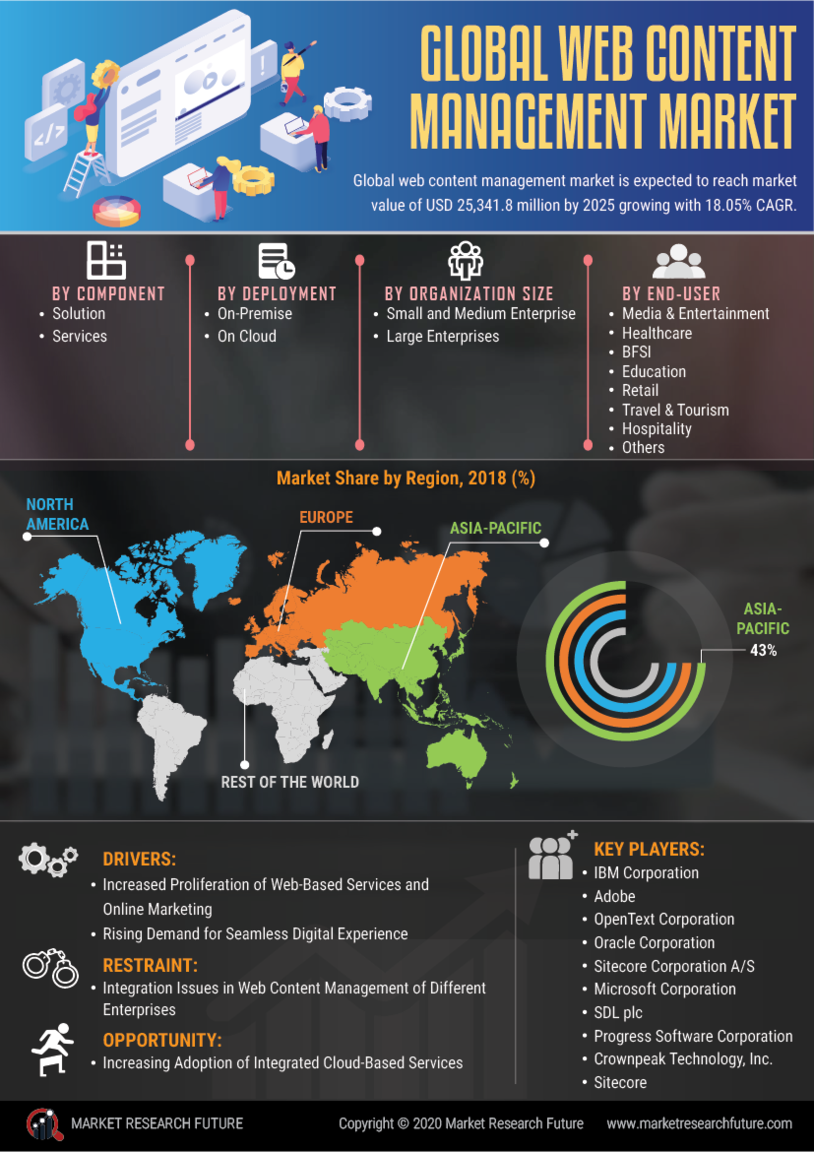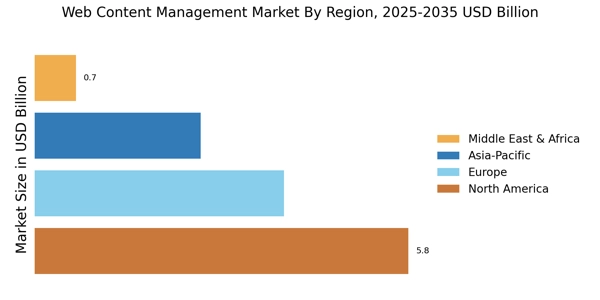Adoption of Cloud-Based Solutions
The shift towards cloud-based solutions is significantly influencing the Web Content Management Market. Organizations are increasingly adopting cloud technologies due to their scalability, cost-effectiveness, and ease of access. Data suggests that the cloud-based web content management segment is expected to witness a substantial growth rate, with many businesses migrating from traditional on-premises systems to cloud platforms. This transition allows for greater flexibility in content management and collaboration among teams, regardless of geographical location. As more companies recognize the advantages of cloud solutions, the demand for cloud-based web content management systems is likely to rise, further driving the growth of the Web Content Management Market.
Rising Demand for Digital Content
The increasing demand for digital content across various sectors is a primary driver of the Web Content Management Market. Organizations are recognizing the necessity of maintaining a robust online presence to engage customers effectively. According to recent data, the digital content creation market is projected to grow significantly, with estimates suggesting a compound annual growth rate of over 15% in the coming years. This surge in demand compels businesses to adopt advanced web content management solutions that facilitate the efficient creation, management, and distribution of content. As a result, companies are investing in sophisticated web content management systems to streamline their operations and enhance user engagement, thereby propelling the growth of the Web Content Management Market.
Increased Focus on Personalization
Personalization has emerged as a crucial factor in enhancing user engagement, driving the Web Content Management Market forward. Businesses are increasingly leveraging data analytics to tailor content to individual user preferences, which has been shown to improve customer satisfaction and retention rates. Research indicates that personalized content can lead to a 20% increase in conversion rates. Consequently, organizations are seeking web content management solutions that offer advanced personalization features, enabling them to deliver targeted content effectively. This trend not only enhances the user experience but also fosters brand loyalty, thereby contributing to the expansion of the Web Content Management Market.
Growing Importance of SEO and Digital Marketing
The growing importance of search engine optimization (SEO) and digital marketing strategies is a significant driver of the Web Content Management Market. As businesses strive to improve their online visibility, they are increasingly investing in web content management systems that integrate SEO tools and analytics. Recent statistics indicate that over 60% of marketers consider SEO to be a top priority for their digital marketing efforts. This trend compels organizations to adopt web content management solutions that facilitate the optimization of content for search engines, thereby enhancing their online presence. Consequently, the emphasis on SEO and digital marketing is likely to continue driving the growth of the Web Content Management Market.
Regulatory Compliance and Data Privacy Concerns
Regulatory compliance and data privacy concerns are becoming increasingly critical in the Web Content Management Market. With the implementation of stringent data protection regulations, such as the General Data Protection Regulation (GDPR), organizations are compelled to adopt web content management solutions that ensure compliance with these laws. Data indicates that companies face significant penalties for non-compliance, which has heightened the urgency for effective content management systems that prioritize data security and privacy. As businesses navigate the complexities of regulatory requirements, the demand for web content management solutions that offer robust compliance features is likely to grow, thereby influencing the trajectory of the Web Content Management Market.


















Leave a Comment